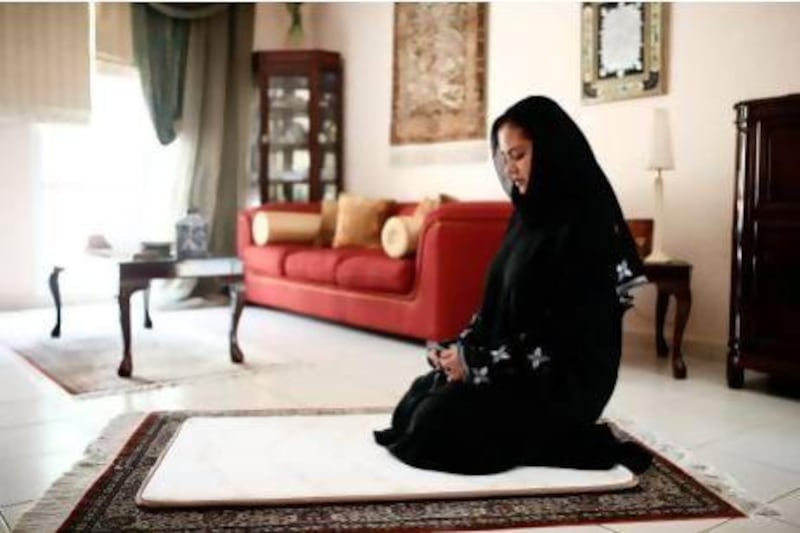DUBAI // Thousands of Muslims in the UAE have been drawn to the world’s first ergonomic prayer mat, which claims to offer comfort and better support while praying.
Patented as a physiological mat, it absorbs weight and reduces pressure from various points in the body through a five-layer system.
The first layer, a micro-fibre surface, has a heat-resistant coating and an anti-microbial skin that fights off bacteria and fungus.
The three central layers absorb, transfer and carry the weight, and the bottom layer has a micro-grip surface to prevent shifting and slipping.
Local experts who have tested the mat, which is distributed regionally from the UAE, agreed the product was unique but were unsure about its benefits.
Dr Hussam Touma, a specialist in physical medicine and rehabilitation at Medcare Orthopaedics and Spine Hospital, said every day he saw patients who complained of pain while praying.
Dr Touma said most of them were older patients who already had problems with their knees, hips or back.
“It’s definitely better than the regular prayer rug,” he said. “It will mainly help because of the absorption.
“These new layers will help to absorb and decrease the weight bearing over joints that will carry all the body for a certain amount of time.
“For people who are elderly that means a lot because usually they already have fragile tissue.”
Paul Johnson, a physiotherapist based in Dubai, highlighted the differences between the physiology of western and Middle East patients.
“When people start to get arthritis of the knee, the first thing that usually happens is they lose their range of movement,” he said.
“In the Muslim world, even the most horrific arthritic knees retain their flexion because of the prayer movement. The majority of people do their utmost to continue prayer, despite any pain or discomfort.”
The prayer mat’s greatest benefit is when the worshipper is in the kneeling position, Mr Johnson said.
“This has a big effect on the actual pressure off the kneecap against the floor,” he said. “There’s a fantastic cushioning and spreading of the load effect.”
Although the maker, Timez5, is based in Canada, the company’s logistics base is in Dubai.
Nader Sabry, Timez5 chief executive and founder, said the UAE was the company’s largest market, having bought several thousand mats in the first quarter of this year and accounting for nearly one fifth of the company’s global market sales.
“UAE consumers are a lot more dynamic,” Mr Sabry said. “They’re always willing to go out and try new things. They’re early adopters and I think that’s why it has been such a success here.”
In their tests, scientists at Timez5 placed sensors on areas of people’s bodies and measured the weight exerted in the various prayer positions.
The results using a regular prayer rug were compared with those of the new mat. The greatest relief of pressure was in kneeling and prostration.
While experts agreed the mat helps to reduce pressure on the joints, they questioned some of the mat’s other claimed benefits, including its effect on posture and increased energy.
If posture is limited “by tight, weak muscles and mechanical changes to the joints then that’s not going to be resolved by just standing on a softer surface”, said Ian Houghton, doctor of napropathy at Dubai’s Scandinavian Health and Performance centre.
“If someone has a tendency to slouch while standing, for example, it’s not likely to change.”
But the effects on posture and energy could be secondary, said David Fitzgerald, a physiotherapist in Ireland who also teaches in Dubai.
“People who are uncomfortable are often constantly twisting and turning when kneeling, so it can help in that aspect,” Mr Fitzgerald said. “But I would debate if pressure relief on the back while standing is a critical benefit.
“As for energy, for people who suffer from pain and discomfort while praying, the experience can be awfully taxing. Relieving that while praying could play a role but I wouldn’t say it’s a direct effect of the mat.”
The psychological aspect also plays a role, Mr Johnson said. The mat costs Dh990 and with that level of investment often comes commitment.
“People who are willing to make that kind of investment are not just investing in a mat, they’re investing in their wellbeing. So people might be more aware of how they’re standing or kneeling. They want to do their best to get the best outcome.”





